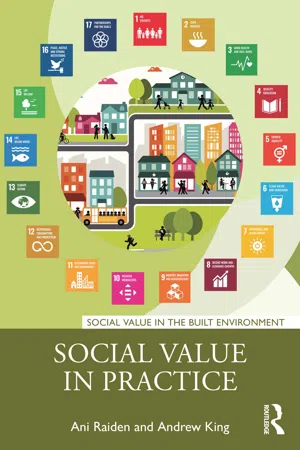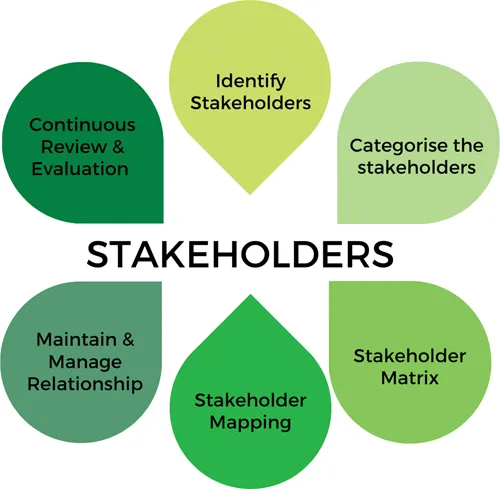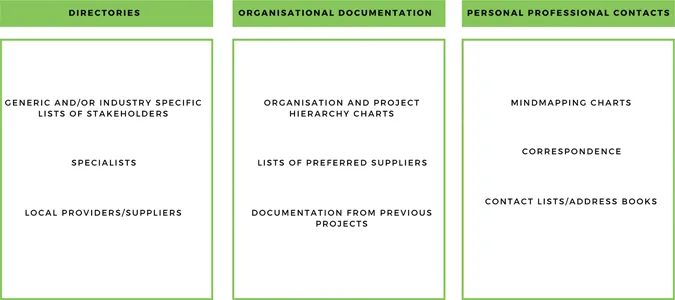
- 304 pages
- English
- ePUB (mobile friendly)
- Available on iOS & Android
Social Value in Practice
About this book
Social Value in Practice offers the reader a simple, accessible guide for considering, creating, and delivering social value in projects and within their organisation.
The book connects social value to the global Sustainable Development Goals (SDGs) and presents an insight into the many and different practical ways in which individuals and organisations can make a positive impact towards resolving the 'people, planet and prosperity' agenda:
- 'Good work' – good practice in managing people, including working conditions, and equality, diversity, and inclusion
- Education, skills, and employment, including apprenticeships and enhancing the industry image
- Social procurement and circular supply chains
- Strategic partnerships and social enterprises
- Community development, regeneration, and placemaking
- Construction consultancy
- Architecture, design, and construction
- Assessing and measuring social value.
Reflective practitioners can pick it up, turn to a chapter, and learn something they can use right away. Through numerous practical examples and think pieces, this book can help readers learn how to create social value, how to improve and build upon current practice, and how to co-create social value in partnership with clients and the supply chain. The authors aim to empower and inspire stakeholders to engage with new ideas and create more value for those using the built environment. This book is a must read for all those involved in procuring, tendering, planning, designing, developing, funding, building, working in, and managing the built environment.
Frequently asked questions
- Essential is ideal for learners and professionals who enjoy exploring a wide range of subjects. Access the Essential Library with 800,000+ trusted titles and best-sellers across business, personal growth, and the humanities. Includes unlimited reading time and Standard Read Aloud voice.
- Complete: Perfect for advanced learners and researchers needing full, unrestricted access. Unlock 1.4M+ books across hundreds of subjects, including academic and specialized titles. The Complete Plan also includes advanced features like Premium Read Aloud and Research Assistant.
Please note we cannot support devices running on iOS 13 and Android 7 or earlier. Learn more about using the app.
Information
Section II Co-creating social value
3 Stakeholder analysis and managing relationships with stakeholders
Stakeholder theory

Identify stakeholders
| Primary | Secondary | |
|---|---|---|
| Internal |
|
|
| External |
|
|
| Legal definition: | A narrow list of only those individuals, groups, and organisations that a firm has legal duties for, or a contractual relationship with, for example, a contract of employment or a contract for services. |
| Narrow definition: | Those groups without whose support the business would not be viable. These are often primary stakeholders. |
| Strategic view: | This view stresses what is good for the firm, seeking to identify stakeholders who are beneficial to its operations. It may include primary and secondary stakeholders. |
| Broad definition: | Any individual, group, or organisation that can affect, or is affected by, the organisation or its activities. This includes the secondary stakeholders. |

- To whom does the organisation have legal obligations?
- Who might be positively or negatively affected by the organisation’s decisions or activities?
- Who is likely to express concerns about the decisions and activities of the organisation?
- Who has been involved in the past when similar concerns needed to be addressed?
- Who can help the organisation address specific impacts?
- Who can affect the organisation’s ability to meet its responsibilities?
- Who would be disadvantaged if excluded from the engagement?
- Who in the value chain is affected?
Table of contents
- Cover
- Half Title
- Series Page
- Title Page
- Copyright Page
- Table of Contents
- List of figures
- List of tables
- Foreword by Sir John Peace
- An introduction from the Series Editors
- About the authors
- Acknowledgements
- Section I Social value: the opportunity
- Section II Co-creating social value
- Section III Placemaking: participative and collaborative design, architecture, and planning
- Section IV Assessing and measuring social value
- Index